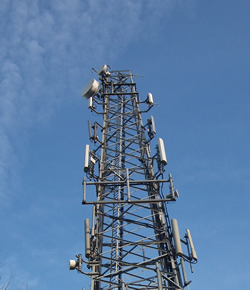Mission critical comms over DMR infrastructure
As utility companies around the world strive to deliver the smart grids of tomorrow, they remain under continuous pressure to keep the lights on. Utility companies face major fines if power is not restored quickly after an outage so therefore need to be able to respond quickly using reliable communications systems.
During outages or grid disruption, it is essential to have a robust voice communications system in place. However, the increasing demands of smarter grid systems mean data is also becoming an equally important part of the mission critical mix. And while there are a growing number of applications that require broadband services, it is typically reliable low band telemetry data that becomes essential for diagnosing problems in the event of outages.
Background
UK utility company Western Power Distribution (WPD) provides electricity to 7.8 million customers across a 55,300km2 service area which covers the Midlands, South West England and South Wales.
Since 2007, Simoco has worked closely with WPD to install one of the largest analogue MPT1327 PMR voice networks in Europe, based on the Simoco Xfin system.
WPD asked Simoco to consider using the PMR systems in the Midlands to carry secondary SCADA telemetry data owing to poor coverage, interference and reliability issues. WPD was looking to move away from its current GPRS solution, used in this area to connect some 8,000 devices.
Following a number of lab and field based trials, Simoco developed a solution that uses a Digital Mobile Radio (DMR) network to transmit mission critical low band data.

Surf Telecoms, a wholly owned subsidiary of WPD, is responsible for monitoring and maintaining the utility network. Maintenance teams have an immediate response time and four hour fix targets for all bandwidth service affecting faults.
Surf Telecoms Manager Kevan Scott said: “WPD operates a ‘Target 60’ initiative, which aims to restore power within 60 minutes in the vast majority of cases.
“If lengthy power outages occur, utility companies can be fined heavily by the industry’s regulator if it is not possible to fix them in a quick and cost effective manner.
“WPD is committed to serving its customers effectively by seeking out ways to minimise disruption when outages occur, while the insight provided by telemetry systems to monitor and control field operations across a widely dispersed infrastructure, enables us to deliver robust, reliable solutions.”
Solution
WPD was provided with Simoco Pulse, a DMR Tier III trunked solution, which uses a fully integrated IP network to connect information sent from data modems or RTUs to Scada masters. This functionality makes it easy to scale the solution to include more modem or RTUs. It means DMR becomes a practical way of managing a large and complex amount of information, with operators and maintenance teams having constant insight into grid performance and any locations where issues have occurred.
As WPD already had existing RTUs in place, it was supplied with the Simoco Pulse Air data modem. The solution uses the DNP3 protocol when communicating across the DMR network. The modem provides a robust connection to the SCADA master using reliable digital radio over licensed VHF and UHF radio channels and is also capable of directly interacting to any RTU that uses this standard telemetry protocol.
The three year programme to upgrade the current WPD network and introduce 100 new sites with DMR infrastructure will include an initial roll-out of 8,000 data modems across the Midlands region. Delivery of the infrastructure and first 2,000 Pulse Air Data Modem units was completed in November 2015, with the first sites expected to go live in early 2016. On completion of the roll-out in the Midland region, the solution will be expanded into the WPD South West and Wales regions.
Benefits
Simoco’s Pulse solution has enabled WPD to add smart grid management and control functionality to its operations. If a problem on the network occurs, WPD saves time and costs by knowing exactly where the problem is located rather than having to dispatch teams to manually search areas of the grid. Before the introduction of telemetry data this involved physical visits to the site in order to locate the source of an outage.
While larger amounts of data can be carried across overlaid broadband networks, providing connections to wide bandwidth devices such as smart phones and tablets, it remains an unreliable and sometimes insecure way of transmitting mission critical data.
In contrast and by their very definition, PMR networks are ‘private’, less open to security threats and less congested than unlicensed radio alternatives or broadband networks.
Private Radio systems also provide a predictable cost of ownership. WPD’s system has been designed to its exact requirements and once installed at the budgeted cost, there are no further call charges or unexpected upgrades as new technologies are rolled-out.
Finally, the Simoco Pulse DMR Tier III trunked solution also has the benefit of being able to offer WPD and other users a flexible way of migrating voice communications from analogue systems to a DMR network. By using DMR to transmit both voice and low band data, mission critical communications can be unified on the same, reliable and cost effective licensed network.
Kevan Scott concluded: “DMR is a standard that has a proven track record for mission critical communications. While voice transmissions remain an essential part of this mix, low band telemetry data is just as critical if you are a utility company in 2016.
“By moving SCADA to DMR we have a secure and reliable picture of our network and the ability to react quickly when issues occur.
“In the areas where the Simoco Pulse solution has already been installed, WPD’s target of restoring power within 60 minutes of an outage is well on the way to being achieved, meaning we are well placed to meet the demands of today and the future.”










